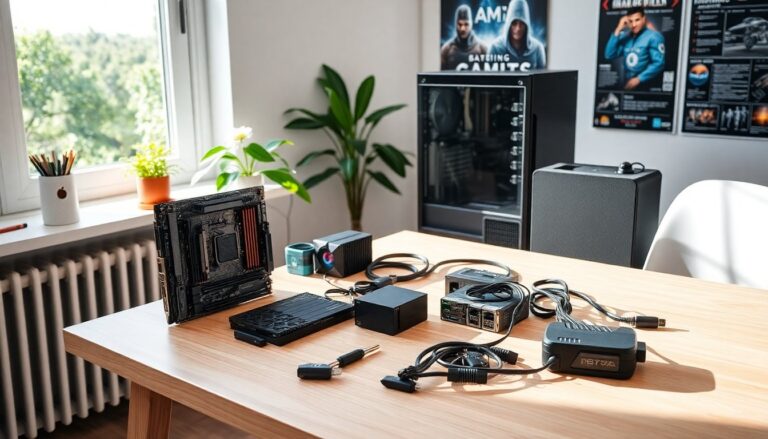Argomenti trattati
Building a gaming PC can be an accessible endeavor, especially with the possibility of assembling a powerful machine for under $800. This guide focuses on selecting components that offer excellent value for your investment, ensuring optimal performance for gaming at 1080p and even 1440p resolutions. Whether you prefer competitive esports or modern AAA titles, this build addresses your requirements.
The landscape for entry-level gaming hardware has evolved significantly in recent years. With rising costs for components, particularly RAM, a do-it-yourself (DIY) approach has emerged as a more economical choice. Our suggested setup features an Intel Arc B580 graphics card, an AMD Ryzen 5 7500F processor, and a generous 32GB of RAM, all based on a platform that allows for future upgrades.
The facts
The core of our gaming PC is the AMD Ryzen 5 7500F. This processor, with its six cores based on the Zen 4 architecture, delivers performance comparable to the more expensive Ryzen 7600 models. Priced around $146, it provides excellent value with a boost clock speed of up to 5GHz and 32MB of L3 cache. These specifications ensure that the 7500F outperforms older models like the 8400F, which has significantly reduced cache.
Originally launched in Asia, the 7500F is now available in the US, allowing budget-conscious builders access to the AM5 platform without a hefty price tag. This opens up a world of upgrade possibilities, including future processors like the 7800X3D. In gaming scenarios, the 7500F competes closely with the Ryzen 5 7600, making it a reliable choice across various titles.
Graphics card selection
For budget-friendly graphics solutions, the Intel Arc B580 is among the best options available. Priced at approximately $250, it is well-suited for gaming at 1080p and can even handle light 1440p gameplay. With 12GB of VRAM, it efficiently manages high-resolution textures, making it a preferable alternative to NVIDIA’s RTX 5050 in most scenarios.
While the B580 excels in popular esports titles like Counter-Strike 2 and Rocket League, it is essential to note potential driver-related issues that may arise when using Intel’s GPUs, which can affect performance and compatibility.
Memory and motherboard considerations
The rising prices of RAM can pose challenges for those on a strict budget. For our build, a 32GB DDR5-6000 kit from Corsair is ideal, though prices have seen a dramatic increase recently. While DDR5-5600 is a viable alternative that can save costs, it may come with a minor performance trade-off.
It is crucial to invest in a motherboard that balances affordability and functionality. We recommend the ASRock B650M-HDV/M.2, which is equipped with modern features such as a Gen 5.0 PCIe PEG slot and various USB ports. Although it lacks built-in WiFi and Bluetooth, these features can easily be added with a PCIe card or by opting for a slightly more expensive model like the ASRock B850M-X WiFi R2.0.
Cooling and storage solutions
Cooling is a critical aspect of any gaming PC. The Thermalright Assassin Spirit 120 V2 is a budget-friendly cooler that competes well against the stock AMD Wraith Stealth cooler, ensuring your CPU remains at optimal temperatures while maintaining low noise levels.
For storage, we recommend the 1TB WD Blue SN5000 PCIe 4.0 M.2 SSD, which strikes a balance between cost and performance. While it may not be the cheapest option, it offers adequate speed and reliability for gaming and general use, accommodating several modern titles comfortably.
Upgrade potential
The landscape for entry-level gaming hardware has evolved significantly in recent years. With rising costs for components, particularly RAM, a do-it-yourself (DIY) approach has emerged as a more economical choice. Our suggested setup features an Intel Arc B580 graphics card, an AMD Ryzen 5 7500F processor, and a generous 32GB of RAM, all based on a platform that allows for future upgrades.0
The landscape for entry-level gaming hardware has evolved significantly in recent years. With rising costs for components, particularly RAM, a do-it-yourself (DIY) approach has emerged as a more economical choice. Our suggested setup features an Intel Arc B580 graphics card, an AMD Ryzen 5 7500F processor, and a generous 32GB of RAM, all based on a platform that allows for future upgrades.1

